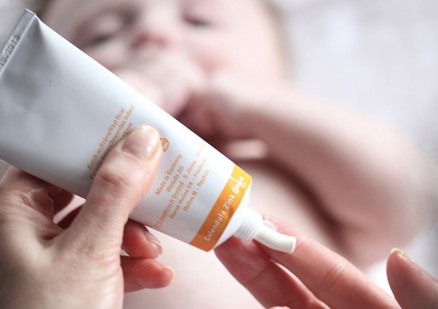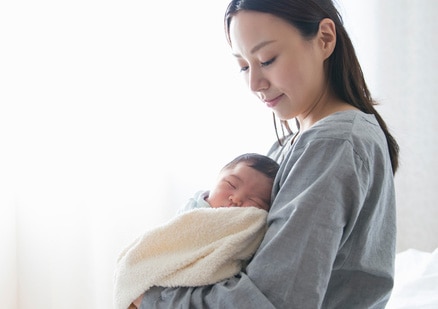Common newborn conditions

Babies are both fragile and strong. That tiny human being you brought into the world is tougher than you think! Learn what’s normal, what to watch for, and when to come in for a visit — but don’t worry yourself sick over your baby’s health. If you’re at all concerned, trust your instincts and call your care team.
Colic
Does your baby have regular episodes of crying that begin around the same time each night, last a few minutes to a few hours, and are difficult to soothe? It might be colic. Colic can be upsetting — and exhausting — but usually stops on its own within 3 months.
Cradle cap
Your baby might develop thick scaly patches on their head called cradle cap. It’s harmless, and usually goes away on its own within a few months. Until then, try this home treatment method:
- Apply mineral oil to the scalp for 1 hour before bath time.
- Wash your baby’s scalp with a gentle, mild shampoo.
- Use a soft toothbrush to loosen the patches before rinsing.
Eye discharge
If the discharge is clear, carefully wipe your baby’s eyes with warm water and a clean, soft washcloth. If it’s yellow, it may be an eye infection, and you’ll need to bring your baby in for an appointment.
Nasal congestion
Many babies make noise when breathing. If your little one is very congested, try saline drops from your local drugstore:
- Place 3 to 4 drops in one nostril.
- Suction that nostril with a soft rubber bulb syringe.
- Repeat on the other nostril.
A cold-mist humidifier can also help your baby breathe easier. Don’t add anything to the humidifier, and don’t use rubs or patches on your baby.
Conditions that need treatment
Although they’re common, these conditions do require a visit to your pediatrician.
Jaundice. This common newborn condition causes the skin and the whites of the eyes to appear yellow. Call your care team if you think your baby has jaundice.
Eye infection. Call your care team if you notice signs of an eye infection in your baby, including swollen eyes, red eyes, or yellowish discharge from the eyes.
Thrush. White patches on your baby’s cheeks, gums, or tongue could be an infection called thrush. Your baby might also refuse to eat, or develop a diaper rash. If you’re breastfeeding, you can get thrush, too. Signs include red scaly nipples and pain during or after nursing. Thrush is common and easy to treat — call your care team if you think you or your baby might have it.
Is it cause for concern?
Call your care team right away if you spot any of these symptoms
Ready to get maternity care?
Find a hospital or care provider near you.



